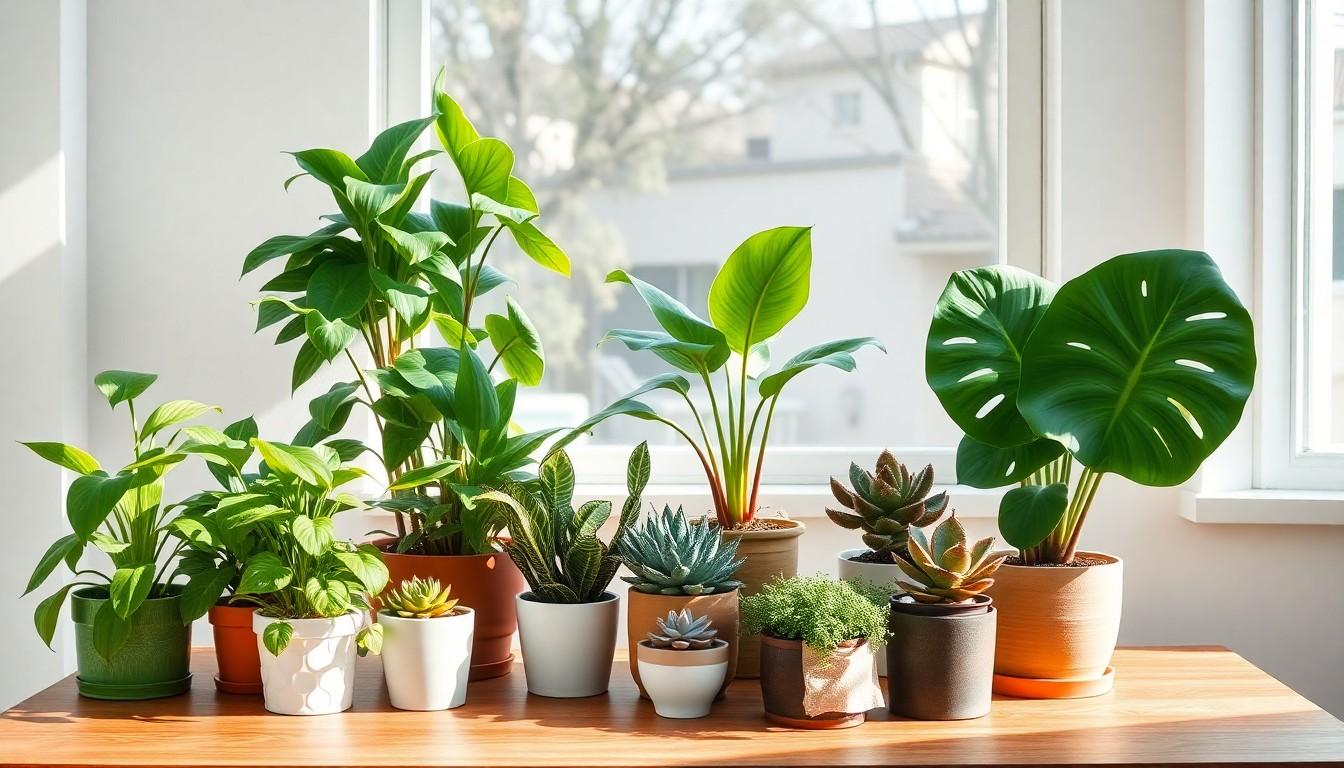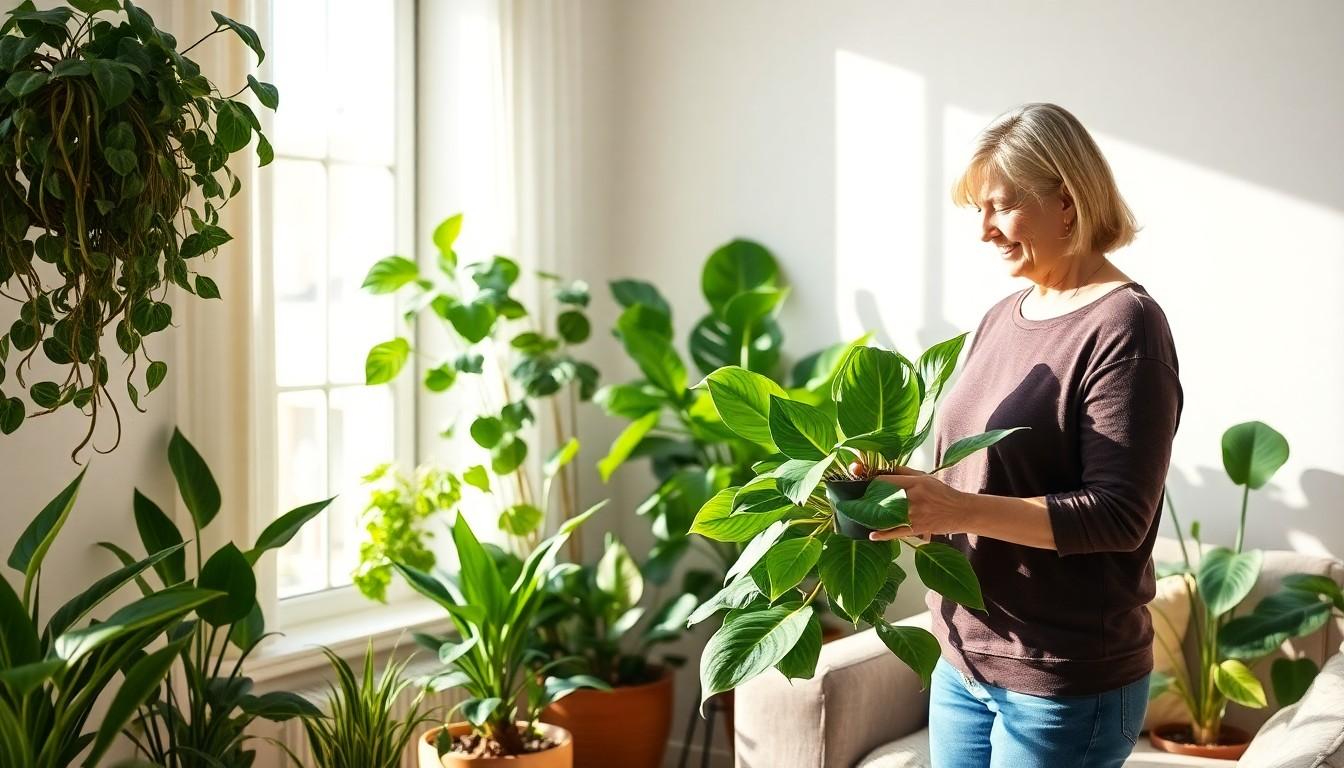Indoor plants can transform a dull room into a vibrant oasis, but identifying them can feel like deciphering a secret code. Ever found yourself staring at a leafy friend and wondering if it’s a majestic monstera or just an overgrown weed? Fear not, plant enthusiast! Understanding your indoor greenery not only boosts your plant-parent confidence but also helps keep those leafy companions thriving.
Benefits of Indoor Plant Identification
Identifying indoor plants enhances care approaches and contributes to overall home beauty. Understanding different species unlocks numerous advantages.
Improved Plant Care
Correctly identifying plants leads to tailored care practices. Knowledge of specific plant needs—light levels, water frequency, and humidity preferences—boosts health and vitality. This awareness enables plant owners to prevent issues like overwatering. Addressing pest problems quickly becomes feasible when the plant type is known. Research shows that plants with proper identification thrive better than those without. Increased confidence among plant owners comes from understanding how to respond to care requirements.
Aesthetic Appeal
Proper identification contributes significantly to a home’s aesthetic. Different plants offer unique shapes, colors, and textures, enhancing interior design. Pairing compatible plants with decor creates a cohesive look. Knowing the characteristics of each species allows for effective selection to achieve visual impact. Studies indicate that well-decorated spaces with plants can boost mood and productivity. Transforming an indoor environment into a refreshing oasis starts with recognizing the right plants.
Common Indoor Plants

Indoor plants vary widely, each adapted to specific light conditions and care requirements. Understanding these plants enhances both their health and aesthetic appeal.
Low-Light Plants
Snake plants thrive in low-light environments. Their hardy nature makes them perfect for spaces with minimal sunlight. Pothos exhibits similar resilience, often growing well in indirect light. ZZ plants, with their glossy leaves, require very little natural light. Additionally, peace lilies bloom even in darker corners, adding elegance to any room. These options prove that even in dimly lit spaces, vibrant greenery can flourish with minimal effort.
High-Light Plants
Succulents love bright, direct sunlight, thriving in sunny windows. Cacti, similarly, demand high light exposure to maintain their unique shapes and colors. Fiddle leaf figs benefit from ample light, promoting robust growth and stunning foliage. Rubber plants enjoy bright environments, which help their leaves develop rich hues. Furthermore, spider plants excel when placed in bright, filtered light, showcasing their dynamic growth patterns. Each of these plants brings distinct character to well-lit areas, transforming spaces with their vibrant vitality.
Tools and Methods for Identification
Identifying indoor plants can benefit from various tools and methods that make the process straightforward. These resources aid in recognizing different species effectively.
Mobile Apps
Mobile apps provide a convenient way to identify plants quickly. Many applications, like PictureThis and PlantSnap, allow users to snap a photo of a plant for instant identification. These apps often include care tips tailored to specific plants, enhancing the plant care experience. Users can also access extensive databases, often featuring high-resolution images and detailed descriptions. Feedback from a community of users encourages learning and sharing experiences, making plant identification a collaborative effort.
Field Guides
Field guides serve as valuable resources for plant identification. These printed or digital books offer comprehensive information about a wide array of species. Many field guides include color photographs, detailed descriptions, and helpful tips for discerning similar-looking plants. Information focuses on key characteristics, such as leaf shape, growth habit, and flower color. Utilizing field guides fosters a deeper connection with plants while enhancing knowledge and confidence in indoor gardening.
Tips for Identifying Indoor Plants
Identifying indoor plants becomes easier with the right focus on specific characteristics. Observing these details can lead to greater knowledge and confidence in plant care.
Leaf Shape and Size
Leaf shape and size play a crucial role in identification. Smooth, pointed leaves indicate a different species than broad, rounded leaves. Shapes range from long and narrow, as seen in snake plants, to large and lobed, like monstera. Analyzing the margin of leaves—whether they’re serrated, entire, or wavy—offers visual clues about the plant type. Sizes can vary significantly, from petite leaves found on small succulents to the dramatic foliage of palm plants. Taking note of leaf arrangements—alternate, opposite, or whorled—also assists in correctly identifying a plant’s species.
Flower Characteristics
Flower characteristics serve as another useful identification tool. Bloom colors and shapes differ among species, making flowers a distinctive feature. For example, vibrant red blooms likely indicate a bromeliad, while small, clustered flowers may belong to a hoya. Observing flower structure—petal count, shape, and texture—can narrow down possibilities. Additionally, flowering patterns, whether sporadic or abundant, hint at the plant’s needs and care preferences. Recognizing seasonal blooms reveals the indoor plant’s growing conditions and maintenance requirements, leading to better overall health.
Conclusion
Mastering indoor plant identification can significantly elevate one’s gardening experience. It empowers enthusiasts to provide tailored care that meets each plant’s unique needs. With the right knowledge and tools, anyone can transform their living space into a vibrant oasis.
Embracing the beauty of diverse plant species not only enhances a home’s aesthetic but also fosters a deeper connection with nature. By utilizing mobile apps and field guides, identifying plants becomes an enjoyable and educational journey.
Ultimately, understanding the intricacies of indoor plants leads to healthier growth and a more fulfilling gardening adventure.





